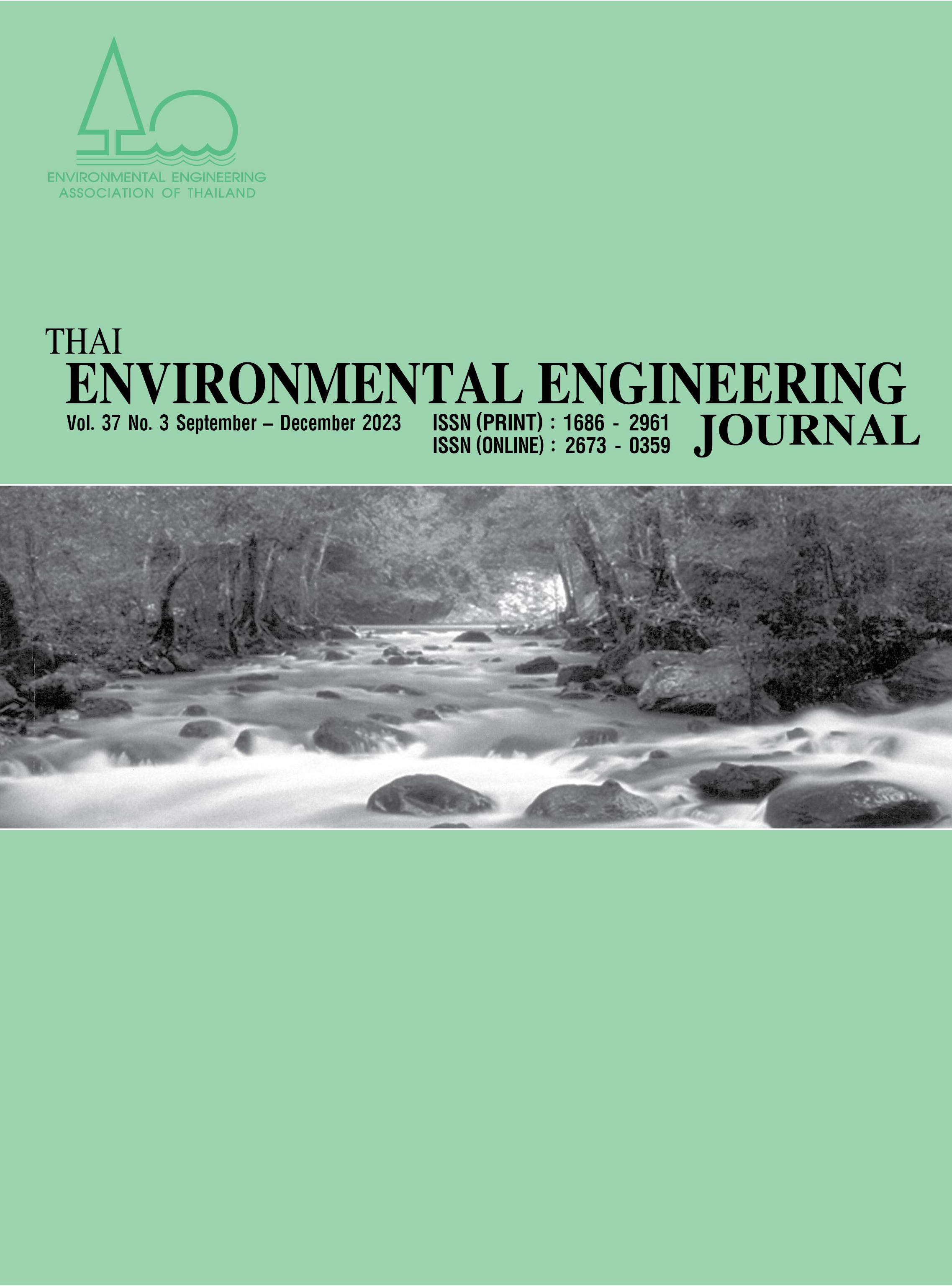Microbial Contamination of Groundwater in Rural Area of Sittwe District, Rakhine State, Myanmar
Main Article Content
Abstract
Rakhine state has high rates of open defecation compared to other parts of Myanmar. In the rural area of Sittwe district, pit latrines were constructed near the water sources such as boreholes, wells, lakes, creeks and river. The discharge of chemical and microbial contaminants from pit latrines to groundwater may have a negative impact on human health and drainage and solid waste disposal are major challenges in both urban and rural area. Open defecation, lack of waste management disposal, construction of pit latrines near water sources lead to fecal contamination or pollution of groundwater table. Groundwater samples in rural area of Sittwe district, Rakhine State, Myanmar were characterized microbiological properties of groundwater. For microbiological analysis, water samples were analyzed qualitative analysis of total coliform and quantitative analysis of fecal coliform (Escherichia coli; E. coli.) by membrane filtration technique (MFT) to determine the safety aspect on utilization of groundwater as a source of drinking purpose. Almost all the indicator organisms’ counts in collected samples were above WHO guidelines for drinking water quality and Myanmar national drinking water quality standard (MNDWQS). The presence of fecal coliform bacteria indicates that the water is contaminated with fecal waste from human or warm-blooded animals and the present of total coliform indicate that the groundwater is contaminated with both fecal waste and other coliform species from the environment. Safe drinking water, adequate sanitation and hygiene are crucial to prevent microbiological contamination of drinking water which can produce diseases such as diarrhea. Reduction of open defecation, construction of systematic latrines, proper waste disposal and management can protect the groundwater pollution and also increase the quality of drinking water.
Article Details
References
World Health Organization (WHO). 2022. Drinking-water. Available from: https://www.who.int/news-room/fact-sheets/detail/drinking-water.
Mohammad, K. 2010. Population structure of gut Escherichia coli and its role in development of extra-intestinal infections. Iranian Journal of Microbiology. Volume 2 Number 2, 59-72.
M. L., B, Y., I. 2014. ESCHERICHIA COLI 0157 (E. coli. O157:H7). Encyclopedia of Food Microbiology, 2nd Edition, ScienceDirect, Elsevier, 2014.
World Health Organization (WHO). 2018. E. coli. Available from: https://www.who.int/news-room/fact-sheets/detail/e-coli
World Health Organization (WHO). 2017. Guidelines for Drinking-water Quality. 4th Edition, WHO, Geneva.
World Health Organization (WHO). 2022. Sanitation. Available from: https://www.who.int/news-room/fact-sheets/detail/sanitation
Myanmar Information Management Unit, MIMU. 2021. Changing Sources of Drinking Water in Myanmar (2014-2019). a MIMU Analytical Brief.
Kendra J., K. 2017. Diarrhea among children under five in Myanmar: a systematic review. J Health Res. Vol. 31, no. 1, February. doi:10.14456/jhr.2017.10.
Center for Diversity and National Harmony (CDNH). 2015. Rakhine State Needs Assessment. Center for Diversity and National Harmony, Yangon, Myanmar.
Action Contre La Faim (ACF). 2014. Semi-Quantitative Evaluation of Access and Coverage (SQUEAC). ACF, Sittwe, Rakhine State, Myanmar.
Inter-cluster Coordination Group (ICCG). 2014. Periodic Monitoring Report. Inter-cluster Coordination Group for the Humanitarian Country Team.
United Nation Development Program (UNDP). 2015. The State of Local Governance: Trends in Rakhine. UNDP Myanmar.
Myanmar Information Management Unit, MIMU. 2018. 2014 Myanmar Census, 2014 Population and Housing Census, Ministry of Immigration and Population, Myanmar.
International Rescue Committee, IRC. 2016. Community-Led Total Sanitation in Rakhine State, Lessons Learned 2015-2016. IRC, Myanmar.
Tarja. P., Paivi. K., IIkka T., M., et. al. 2011. Microbial Contamination of Groundwater at Small Community Water Supplies in Finland. AMBIO, Royal Swedish Academy of Sciences, 40: 377-390.
KUMAR, A., NIRPEN, L., RANJAN, A., et. al. 2014. Microbial groundwater contamination and effective monitoring system. Asian Journal of Environmental Science. Vol. 9, Issue 1, June, 37-48.
Zamxak, M., Pironcheva, G., Muyima, N. 2004. Microbiological and physic-chemical assessment of the quality of domestic water sources in selected rural communities of the Eastern Cape Province, South Africa. Water SA, Vol. 30, No. 3, July.
Franziska, G., Juliet, W., Tim, F. 2021. Faecal contamination of groundwater self-supply in low- and middle income countries: Systematic review and meta-analysis. Water Research. 201, 117350.
United Nations Office for the Coordination of Humanitarian Affairs (UN OCHA). 2012. Urgent action needed to improve water and sanitation for displaced Myanmar’s Rakhine State despite some progress. UN OCHA Myanmar, December.
World Health Organization (WHO). 2019. Invisible – The Rohingyas: the crisis, the people and their health. WHO (South East Asia).
UNICEF. 2021. Myanmar Humanitarian Situation Report No.3. UNICEF Myanmar.
United Nations Office for the Coordination of Humanitarian Affairs (UN OCHA). 2022. Humanitarian Update No. 15. UN OCHA Myanmar, February.
Myanmar Standards Organization. 2019. Myanmar National Drinking Water Quality Standard. National Standards and Quality Department, Myanmar.
Jay P., G., Matthew L., P. 2013. Pit latrines and their impacts on groundwater quality: A systematic review. Environmental Health Perspectives. Volume 121 Number 5, May.
Myanmar Information Management Unit, MIMU. 2017. State Map District Rakhine, 23 October.
World Health Organization. 2000. WHO Guidelines for Drinking Water Quality Training Pack. Protection of the Human Environment; Water, Sanitation and Health Series, Geneva.
Rahman, S., Ahmed, S., Zakariya, M. 2009. Investigation of shallow tube-well water quality considering the influence of nearby latrines in a rural village of Bangladesh. Trends and sustainability of groundwater in highly stressed aquifers. In: Proceeding of Symposium JS.2at the Joint IAHS and IAH Convention. Hyderabad: IAHS Publishers; 329.
NIPORT. 2005. Bangladesh demographic and health survey. Dhaka, Bangladesh and Calverton, MD, USA: National Institute of Population Research and Training, Mitra and Associates, Dhaka, Bangladesh.
M. Sirajul, I., Zahid Hayat, M., M. Shafiqual, I., et. al. 2016. Safe distances between groundwater-based water wells and pit latrines at different hydrogeological conditions in the Ganges Atrai floodplains of Bangladesh. Journal of Health, Population and Nutrition, 35: 26, DOI 10.1186/s41043-016-0063-z
D.A., S., S.R., N. 2002. Groundwater contamination due to pit latrines located in a sandy aquifer: a case study from Maputaland. Biennial Conference, Durban, Water Institute of Southern Africa.
John Ogony, O., Mashudu Maxwell, M., Rachel, M. 2020. Health Risks and Potential Sources of Contamination of Groundwater Used by Public Schools in Vhuronga 1, Limpopo Province, South Africa. Int. J. Environ. Res. Public Health 2020, 17(18), 6912; https://doi.org/10.3390/ijerph17186912.


